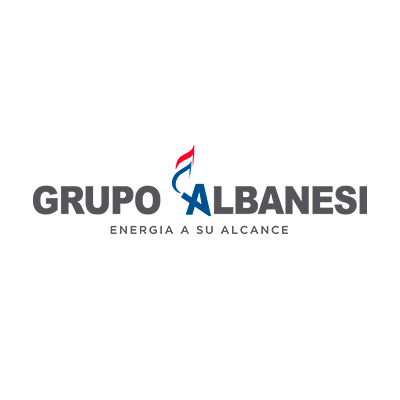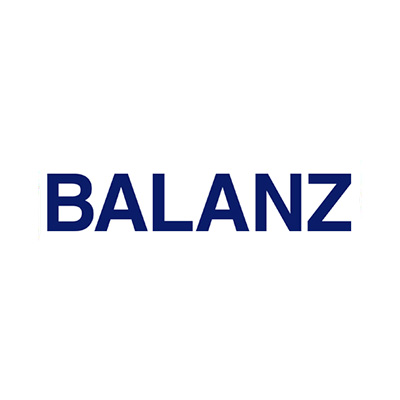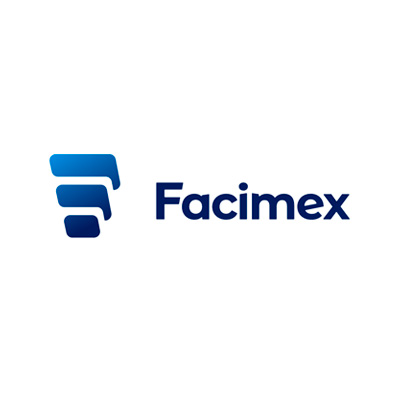Emergency Decree 70/2023 and the Energy Sector
On December 21, 2023, President Javier Milei released Emergency Decree No. 70/2023 (“Decree 70”). Decree 70 will enter into force on December 29.
While emergency decreets are constitutionally required to go through Congress, they are binding until they’re overturned.
Key aspects of the measures adopted by Decree 70 with respect to the energy sector are summarized below:
1. Hydrocarbons: Decree 70 revokes Decree No. 1060/2000 that established a limited term of exclusive fuel supply contracts entered into between oil companies and/or fuel suppliers and gas stations operators.
2. Electricity:
- Export Contracts: Decree 70 revokes Decree No. 1491/2002. This decree established that power capacity, energy and trading agreements: (i) were not comprised by Law No. 25,561 (that declared public emergency and the reform of the FX rate regime in 2002) and Decree No. 214/2002 (which allowed debtors to cancel payment obligations in Argentine pesos), and (ii) would be exclusively invoiced in US Dollars.
- Power Transmission Expansions: Decree 70 revokes Law No 25,822 that established the “Federal Electric Transportation Plan”, implemented by the Secretary of Energy (the “SE”). It also revokes Decree 624/2003 that authorized the SE to re-determine the fee or price corresponding to the portion of power transmission facilities not yet operational, regarding high voltage transmission or trunk distribution grid.
- Refundable loans: Decree 70 revokes Decree No. 311/2006, that approved refundable loans from the National Treasury to the Unified Fund, created by Section 37 of Law No. 24,065. Per law, receivables of the Unified Fund would act as a hedge against the fluctuations of the spot price and the stabilized price of the Wholesale Electricity Market (WEM).
- Distributed Generation: Decree 70 abrogates Sections 16 to 37 of Law No. 27,424, which foresaw certain promotional provisions with respect to distributed generation.
3. Powers granted to the Secretary of Energy: Decree 70 gives broad rights to the SE to redetermine the current pricing and subsidy structure of the energy chain, comprising electricity and gas.
For additional information, please contact Nicolás Eliaschev, Javier Constanzó, Pablo Arrascaeta, Daiana Perrone, Rocío Valdez, and/or Victoria Barrueco.
President Javier Milei Omnibus Reform Bill
On December 27, 2023, Argentine President Javier Milei sent to the Congress an omnibus reform proposing far-reaching changes with respect to the matters described below.
- Creation of an Incentive Regime for Large Investments: The bill creates the so-called "Incentive Regime for Large Investments", through which the holders and/or operators of large investments in new projects or expansions of existing ones of certain sectors (including agribusiness, infrastructure, forestry, mining, oil and gas, energy, and technology) that adhere to such regime will be entitled to tax grants, customs and FX benefits, among others, and long-term stability in such matters.
- Introduction of changes in Public Works Concession regulation: Relevant amendments to the public works concession regime of Law No. 17,520 are contemplated, providing broad provisions with respect to the incorporation of sole purpose investment vehicles (SPVs), financing parties protection, arbitration resolution mechanisms, covenants of the State, and the possibility of presenting infrastructure projects by initiative of the private sector.
- Amendments to the Electric Energy Regulatory Framework: The National Executive Power is empowered until December 31, 2025 to reform the electricity regulatory framework (Laws No. 15,336 and 24,065). Such changes shall conform the following guidelines: the right to freely negotiate export/imports electricity agreements; promote competition and the expansion of electricity markets; ensure that electricity transactions are based on economic rules; provide for transparency on price and rate calculation mechanisms; and foster the expansion of the transmission infrastructure.
- Energy transition and reduction of GHG emissions : Within the framework of compliance with the Greenhouse Gas ("GHG") emissions targets committed by Argentine under the Paris Treaty, the National Executive Power is empowered with the right to assign GHG emission rights to each economic sector, set annual limits compatible with international commitments, monitor and penalize non-compliance with emission targets, and establish an emission rights market for the trading of surpluses of those who comply with their targets. The National State will provide private companies, the public sector and other organizations with the appropriate conditions and instruments to achieve these goals and access climate financing facilities.
For additional information, please contact Nicolás Eliaschev, Javier Constanzó, Daiana Perrone, Milagros Piñeiro, Pablo Arrascaeta, Florencia Martínez Trobbiani, Rocío Valdez and/or Victoria Barrueco.
Albanesi Group´s US$ 31,380,462 Notes Offering

Counsel to Generación Mediterránea S.A. and Central Térmica Roca S.A. in the co-issuance of 9.5% Class XXV Additional Notes for US$ 3,668,561 due April 18, 2026, and 6.5% Class XXVI Additional Notes for US$ 27,711,901 due April 12, 2026, issued under the Global Notes Program for an amount up to US$ 1,000,000,000.
Banco de Servicios y Transacciones S.A., SBS Trading S.A., Balanz Capital Valores S.A.U., Macro Securities S.A.U , Facimex Valores S.A., Puente Hnos S.A, Banco de la Provincia de Buenos Aires, Nación Bursátil S.A., Banco Supervielle S.A., Bull Market Brokers S.A., Invertironline S.A.U, Invertir en Bolsa S.A., Petrini Valores S.A., Neix S.A., Global Valores S.A., TPCG Valores S.A.U., Banco Hipotecario S.A., BACS Banco de Crédito y Securitización S.A. and Allaria S.A. acted as placement agents of Class XXV Additional and Class XXVI Additional Notes, while SBS Capital S.A. and Banco de Servicios y Transacciones S.A. acted as placement agents.
Argentina declares emergency in energy sector
The recently elected Administration has declared the energy sector emergency. The measure was adopted by emergency decree No. 55/2023 (“Decree 55”).
Additionally, Decree 55 orders the gas and electricity regulatory bodies to undertake an integral rate review, in turn authorizing temporary rate hikes.
Further, Decree 55 entrusts the Secretary of Energy (“Secretary of Energy”) to establish a comprehensive governmental program with respect to power generation, transmission and distribution, and gas production, transportation and distribution, with the end-goal of establishing a pricing criteria based on market conditions and free access rules, while maintaining revenue levels in real terms and covering investment needs.
Finally, regulatory bodies ENARGAS and ENRE are intervened while their directors are appointed through a public contest.
Key aspects of Decree 55 are as follows:
I. Considerations of Decree 55
Decree 55 seeks to adopt urgent measures in view of the high risk of natural gas and electricity energy shortage to users all around the country, while assuring a better and more efficient service.
In a general way, Decree 55 also recognizes that gas and electricity public utilities associated infrastructure is becoming obsolete, namely because the lack of grid expansion programs.
It also added that power transmission lacks capacity, leading to curtailment. Moreover, it recognizes that the pricing criteria and current remuneration schemes do not have the adequate signs for new investment, nor promote a market-term among the industry participants.
With respect to natural gas transportation infrastructure, it is noted that local production of natural gas in northern Argentina and the availability of the resource imported from Bolivia have decreased, thus leading to potential shortages. Therefore, the need for the reversion of the Northern Gas Pipeline is highlighted, to guarantee gas supply on that area, which is critical to lithium and other industries too.
II. Relevant provisions of Decree 55
- Powers of the Secretary of Energy: The Secretary of Energy is empowered with elaborating an overall program with respect to the activities mentioned before, with the objective of establishing a rate and pricing criteria under conditions of competition and free access, maintaining in real terms the levels of income, covering investment needs, and guaranteeing a secure and continuous public utilities.
- Rate adjustment and temporary increases: Gas and power regulators ENRE and ENARGAS must start revising gas and electricity rates, and by December 31, 2024, a new rate scheme should be in place. Temporary increases are permitted.
- Intervention of ENRE and ENARGAS: The ENRE and ENARGAS are intervened until their vocals are appointed. Broad powers are given to the intervenors, who will be appointed by the Secretary of Energy.
For additional information, please contact Nicolás Eliaschev, Javier Constanzó, Daiana Perrone, Pablo Arrascaeta, Milagros Piñeiro, Florencia Martínez, Rocío Valdez and/or Victoria Barrueco.
Javier Constanzó, new Partner of the Energy & Infrastructure Department

We are pleased to announce the promotion of Senior Associate Javier Constanzó to the position of Partner.
Mr. Constanzó will join the Energy & Infrastructure Department where he will be a partner along with Nicolás Eliaschev, cementing the Firm's presence in those key industries. He is a regulatory and public law expert, who has an outstanding and extensive experience in structuring energy and infrastructure projects, with relevant expertise in project finance, acquisitions, and other corporate finance transactions in renewable and conventional energy projects. He also advises a range of clients in a variety of infrastructure matters, primarily involving lithium, representing banks, sponsors, mining companies, and power generation companies.
His contributions to the legal field have been acknowledged with distinctions, including being named a Rising Star by Legal500 on multiple occasions.
Javier has played key roles throughout his career as Associate at Tavarone Rovelli Salim & Miani since October 2016, helping to build the energy powerhouse practice at the Firm. Also, during 2021-2022 he worked as an International Visiting Associate at the Latham & Watkins office in New York, as part of the corporate and project finance practice, and successfully rejoined the firm after that.
Mr. Constanzó holds a Postgraduate Degree in Finance and Corporate Law from the Universidad del CEMA, a Master’s Degree in Public Law and Economics from the Pontifical Catholic University of Argentina, and is a qualified lawyer from the University of Buenos Aires.
In addition to his private practice, Javier has been a visiting professor of energy and public law in several universities.
“In the current context, under a new Administration in Argentina, we see great potential for new business in the energy, infrastructure and natural resources industries. Javier will add tremendous expertise to our platform and strengthen one of our leading practices”, said Marcelo R. Tavarone, Managing-Partner of the Firm.
“Constanzó is a strong team player and a commercially focused lawyer, who has helped to build a robust practice. I am extremely proud for his promotion to the role of Partner, and he will definitely help to continue growing our market share and delivering outstanding legal service to our clients”, added Nicolás Eliaschev, Partner at the Energy and Infrastructure practice.
Tavarone, Rovelli, Salim & Miani stands out as one of the prominent full-service law firms in the Argentine legal market, with a substantial track record of providing comprehensive advice to corporate and financial clients, as well as active participation in complex transactions and litigation. With this promotion, the Firm will add relevant firepower to the already well-known energy, infrastructure and natural resources practice.
Media Contact: Paula Cafferata - paula.cafferata@trsym.com
Establishment of the Environmental Protocol for Massive Events
On December 7, 2023, the Ministry of Environment and Sustainable Development published Resolution No. 465/2023 (the "Resolution"), that created the Environmental Protocol for Massive Events (the "Protocol"). Organizers of massive events are invited to adhere to such Protocol.
The Protocol is framed in the 2030 Agenda and the Sustainable Development Goals (SDGs), as an additional public policy to achieve observations of the SDGs and to reduce the negative impact that urban life has on the environment, especially in managing mass events. It aims to provide tools that contribute to the reduction of the environmental impact produced before, during and after the development of mass events, through concrete actions and indicators to measure the performance of the environmental management of the event.
Thus, in order to carry out a correct management of environmental impacts in a mass event, it is important to consider all the impacts derived from the procurement of raw materials, production, transportation, and end of life of all the elements used for its realization.
The Protocol identifies the following lines of action for the sustainable management of mass events:
- Waste;
- Responsible consumption;
- Communication and environmental education;
- Sustainable mobility;
- Energy;
- Water; and
- Inclusion and Diversity.
Based on these, the Protocol proposes certain qualitative and quantitative indicators to monitor and have metrics that serve to set goals and improvements in the future.
For additional information, please contact Nicolás Eliaschev, Pablo Arrascaeta, Milagros Piñeiro, Rocío Valdez and/or Victoria Barrueco.
News in the hydrocarbons sector: The establishment of the National Program for the Measurement and Reduction of Fugitive Emissions Derived from Hydrocarbon Exploitation and Production Activities
On December 1, 2023, the Secretary of Energy published Resolution 970/2023 (the “Resolution”) that establishes the “National Program for the Measurement and Reduction of Fugitive Emissions Derived from Hydrocarbon Exploitation and Production Activities” (the “Program”).
The Program aims to:
- Promote actions for detecting, measuring, quantifying and validating fugitive emissions in hydrocarbon exploration and production activities;
- Organize and systematize the information obtained from the measurements made; and
- Encourage the implementation of plans for mitigation and reduction of fugitive emissions derived from hydrocarbon activities.
The obligated parties -individuals and/or legal entities- must submit to the Undersecretary of Hydrocarbons of the Nation:
- An Annual Fugitive Emissions Measurement Plan; and
- A five (5) year Comprehensive Plan referred to the reduction of fugitive emissions, in order to implement specific measures that prioritize the efficiency and use of the gas resource.
The information arising from the above-mentioned plans will be published on the website of the Secretary of Energy.
The regulated entities that have new facilities shall tend to the incorporation of good practices and management actions, appropriate for minimizing fugitive emissions produced from the planning and design stage of such facilities.
It is important to mention that the deadlines for compliance as well as any other aspect related to the implementation of the Resolution shall be subject to the regulation to be issued accordingly.
For additional information, please contact Nicolás Eliaschev, Pablo Arrascaeta, Milagros Piñeiro, Rocío Valdez and/or Victoria Barrueco.
The Secretary of Energy establishes new charges for large consumers
On December 5, 2023, the Secretary of Energy published Resolution 976/2023 (“Resolution 976”), which establishes new charges for the Large Users of the Wholesale Electricity Market (“WEM”) and the Wholesale Electricity Market of Tierra Del Fuego System (“WEMSTDF”), that are supplied by the respective distribution companies.
The most relevant aspects of Resolution 976 are outlined below:
I. Scope and effectiveness
Resolution 976 is applicable to Large Users of the WEM and WEMSTDF that are supplied by the relevant distribution company. Resolution 976 shall come into effect starting on February 2024.
II. Charges included in Resolution 976
- Stabilized Charge
The Stabilized Charge will be calculated as the difference between the Average Energy Price of the WEM and the sum of the Power Reference Price (POTREF), the Stabilized Energy Price (PEE) and the Stabilized Transportation Price (PET) established by Resolution 884/2023, applicable to the whole demand characterized as GUDIs, except for public education and health establishments.
- Capacity Adjustment Charge
The Capacity Adjustment Charge will be determined based on the difference between the Monthly Reserve Price and the stabilized Power Reference Price (POTREF) and applied to the difference between the maximum and average requirement of Large Users.
III. Undersecretary of Electric Power to adopt complementary measures
The Secretary of Energy empowers the Undersecretary of Electric Power to dictate any complementary regulation that may be required to apply Resolution 976.
For additional information, please contact Nicolás Eliaschev, Javier Constanzó, Daiana Perrone, Luciana Tapia and/or Victoria Barrueco.
Relevant aspects on the Guidelines for the development of Environmental Impact Reports and Public Participation in Environmental Impact Assessments
On November 30, 2023, the Secretary of Climate Change, Sustainable Development and Innovation of the Ministry of Environment and Sustainable Development released the “Guideline for the development of Environmental Impact Report” (the “EIR Guideline”) and the “Guideline on Public Participation in Environmental Impact Assessment” (the “PP Guideline”), both approved by the Resolution No. 23/2023 (the “Resolution”).
The most relevant aspects are detailed below:
I. Guidelines for the development of Environmental Impact Report
The EIR Guideline is intended to professionals responsible for the development of the Environmental Impact Report (“EIR”) and to the agencies involved in the technical review and environmental licensing of the projects.
It also promotes the integration of the climate change variable in the different phases of the EIR, incorporating information throughout the Environmental Impact Assessment (“EIA”). The inclusion of the climate change variable in the EIA is suggested through two approaches:
- Adaptation: evaluates how climate change may influence the project, considering possible climate scenarios and risks that could affect the expected life cycle; and
- Mitigation: considers how the project may influence the emission of greenhouse gases ("GHG"), regarding actions by the proponent to avoid or reduce GHG emissions or even increase their absorption through reservoirs or sinks.
II. Guide on Public Participation in Environmental Impact Assessment
The PP Guide seeks to broaden and diversify the mechanisms for public participation in environmental matters. It is mainly intended to the proponents, promoting agencies, professionals responsible for the elaboration of EIR and other offices of the Public Administration involved.
Public participation has different scopes depending on the type of involvement promoted by the evaluating authority or the proponent. Thus, at least four levels of participation can be identified (information, consultation, dialogue, and decision making) that can take place at various points in the project cycle, depending on the size of the project and the strategy defined for stakeholder involvement.
The PP Guide also proposes the qualitative technique of "stakeholder mapping", which makes it possible to identify stakeholders, understand their interests and how each one can affect the viability of the project.
Consultation mechanisms may include multisectoral workshops, virtual consultations, co-creation events, dialogue tables, mediation, or negotiation hearings, direct (door-to-door) visits to communities, participatory management tables, monitoring, and follow-up committees, among others.
The PP Guide proposes the presentation of a disclosure document to optimize access to environmental information and participation in effective decision-making and facilitate the understanding of EIR for the general non-specialized public.
For additional information, please contact Nicolás Eliaschev, Pablo Arrascaeta, Daiana Perrone, Milagros Piñeiro, Rocío Valdez and/or Victoria Barrueco.
Albanesi Energía S.A.’s Issuance of Series IX, Series X and Series XI Additional Notes for US$ 37,839,699















Counsel to the placement agents on Albanesi Energía S.A.´s issuance of 3.8% Class IX Additional Notes for 6.920.773 UVAs, equivalent to AR$2,804,504,843 due February 13, 2026, 5.0% Class X Additional Notes for US$ 26,791,276 due September 21, 2025; and 9.5% Class XI Additional Notes for US$ 4,314,018 due March 21, 2026, issued under the Global Notes Program for an amount up to US$ 250,000,000.
Banco de Servicios y Transacciones S.A., SBS Trading S.A., Balanz Capital Valores S.A.U., Facimex Valores S.A. and Invertir en Bolsa S.A. acted as placement agents of all three Classes, while Puente Hnos. S.A., Adcap Securities Argentina S.A., Banco de la Provincia de Buenos Aires, Invertir en Bolsa S.A., Invertironline S.A.U., Banco Supervielle S.A., Nación Bursátil S.A., Banco Santander Argentina S.A., Bull Market Brokers S.A. and Global Valores S.A. acted as placement agents of Class X and Class XI Notes.



